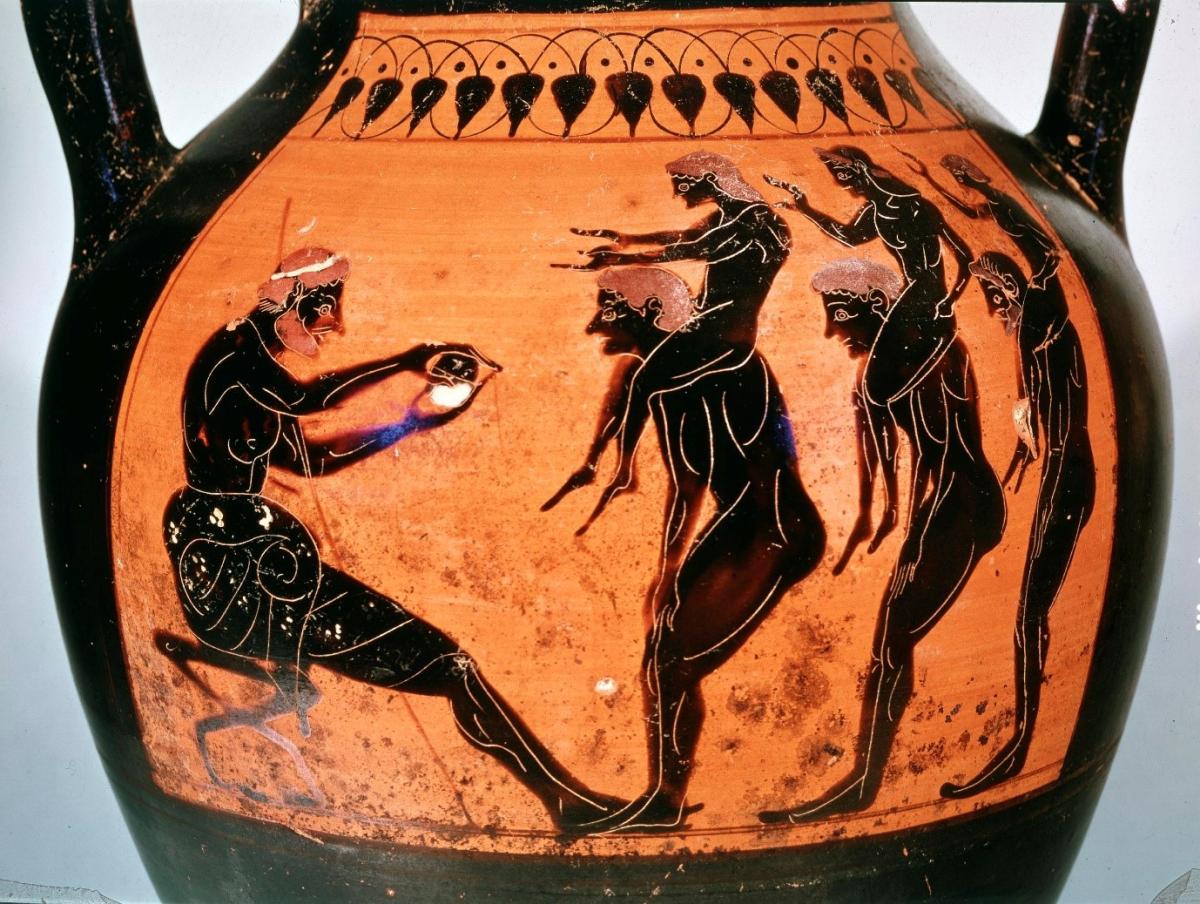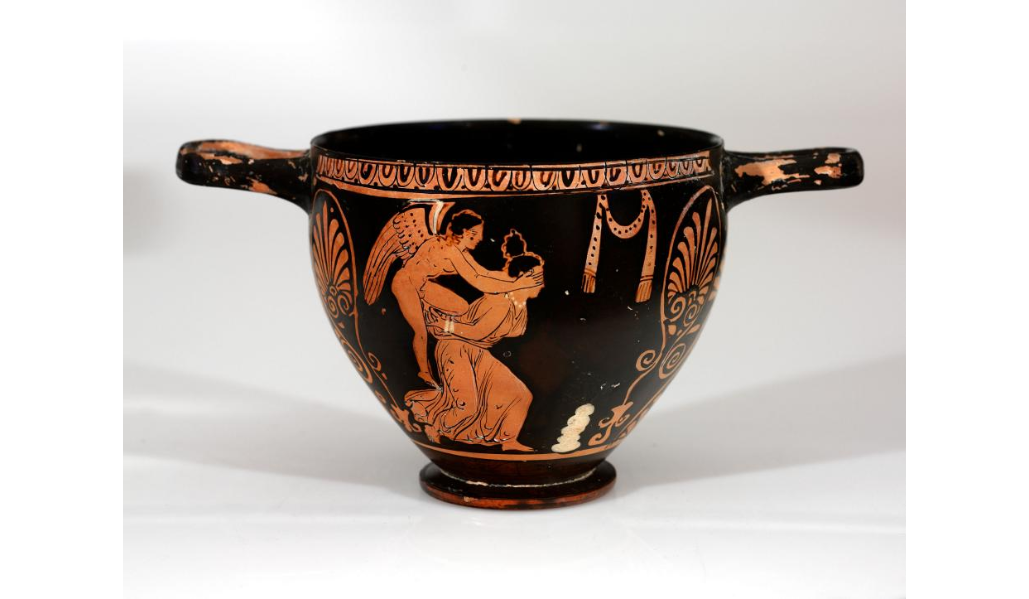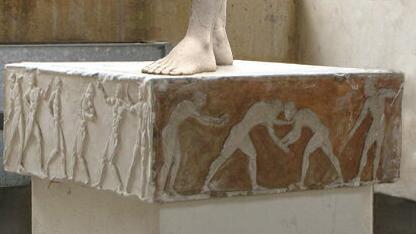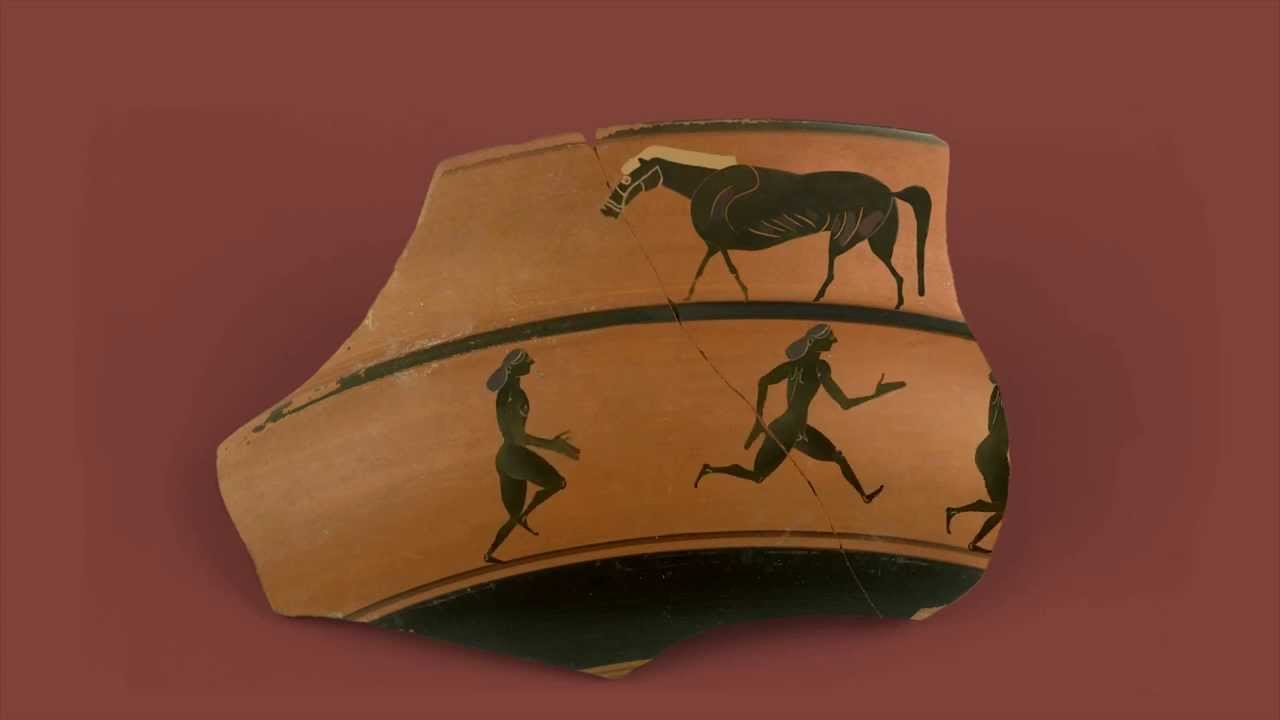Ephedrismos was a popular game that people played for fun throughout ancient Greece. The name ‘ephedrismos’ means ‘carry on the back.’ It could be played lots of different ways, but it always involved one person giving another person a piggyback. Bonus fact: the English term ‘piggyback’ comes from a corruption of the old term ‘pick a pack’ or ‘pick pack,’ meaning to carry a pack on your back and shoulders. Perhaps you know the name of this sort of game in other languages.
Much of what is known about these ephedrismos games comes from pottery images of people playing, from terracotta statuettes of the games, and from the Roman writer, Julius Pollux, who wrote about it in his work Onomasticon (9.119). From these sources we can see that ephedrismos was often played with a referee throwing a ball into a group of competing piggyback pairs. In another version of the game, a stone would be set on the ground as a marker and players threw pebbles at the stone to knock it over. The person who knocked it over first was the winner, and they would climb on the back of the other player and put their hands over their eyes. The carrier, now blinded, had to try to reach the target, now carrying his opponent! The person being carried in a game of ephedrismos is often shown holding a ball, a discus, or a piece of fruit.
Images of ephedrismos show that it was usually played by pairs of boys or pairs of girls, that is, almost no mixed sex pairings. A vase in the J. Paul Getty Museum is a rare and subversive exception, showing a male satyr carrying a female maenad (vase 71.AE.444).
Ephedrismos was a game of balance and agility. It could also be seen as having a symbolic element, like many ancient Greek games. The rider could be seen as Eros, the love god. A scene of people playing could therefore represent an impending marriage. Sometimes playful Eros himself is shown riding on someone’s back. This aspect made the game suitable for festivals with a fertility element. People were especially likely to play ephedrismos at the time of these fertility festivals, which could also include an ephedrismos procession, like the one in the animation.

Ephedrismos teams gather to receive the ball from the referee, on a Athenian black-figured amphora.
British Museum, 1837,0609.65.

Eros playing ephedrismos with a young woman, on a skyphos from Apulia in Southern Italy, c. 375-350 BCE.
On the reverse, a young male athlete is flirting with a young woman. RISD Museum 25.089. Courtesy of the RISD Museum, Providence, RI.
https://risdmuseum.org/art-design/collection/drinking-cup-skyphos-25089


